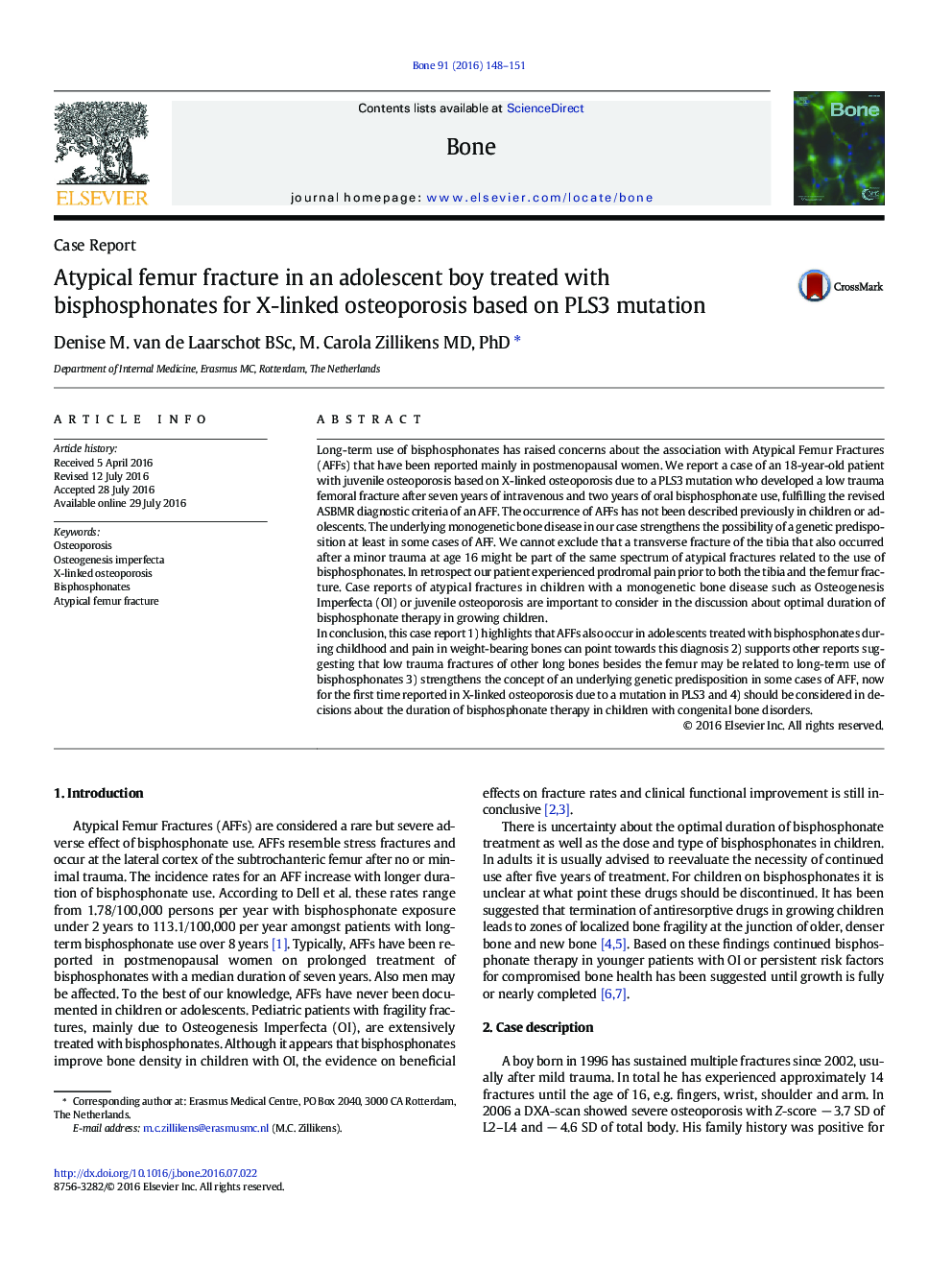| Article ID | Journal | Published Year | Pages | File Type |
|---|---|---|---|---|
| 5888873 | Bone | 2016 | 4 Pages |
â¢AFFs also occur in adolescents treated with bisphosphonates during childhood.â¢AFF is for the first time reported in X-linked osteoporosis due to PLS3 mutation.â¢A genetic predisposition may underlie AFF at least in some cases.â¢Bisphosphonate-associated fractures may occur in other long bones beside the femur.â¢The occurrence of AFFs should be considered in management of congenital bone disease.
Long-term use of bisphosphonates has raised concerns about the association with Atypical Femur Fractures (AFFs) that have been reported mainly in postmenopausal women. We report a case of an 18-year-old patient with juvenile osteoporosis based on X-linked osteoporosis due to a PLS3 mutation who developed a low trauma femoral fracture after seven years of intravenous and two years of oral bisphosphonate use, fulfilling the revised ASBMR diagnostic criteria of an AFF. The occurrence of AFFs has not been described previously in children or adolescents. The underlying monogenetic bone disease in our case strengthens the possibility of a genetic predisposition at least in some cases of AFF. We cannot exclude that a transverse fracture of the tibia that also occurred after a minor trauma at age 16 might be part of the same spectrum of atypical fractures related to the use of bisphosphonates. In retrospect our patient experienced prodromal pain prior to both the tibia and the femur fracture. Case reports of atypical fractures in children with a monogenetic bone disease such as Osteogenesis Imperfecta (OI) or juvenile osteoporosis are important to consider in the discussion about optimal duration of bisphosphonate therapy in growing children.In conclusion, this case report 1) highlights that AFFs also occur in adolescents treated with bisphosphonates during childhood and pain in weight-bearing bones can point towards this diagnosis 2) supports other reports suggesting that low trauma fractures of other long bones besides the femur may be related to long-term use of bisphosphonates 3) strengthens the concept of an underlying genetic predisposition in some cases of AFF, now for the first time reported in X-linked osteoporosis due to a mutation in PLS3 and 4) should be considered in decisions about the duration of bisphosphonate therapy in children with congenital bone disorders.
